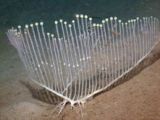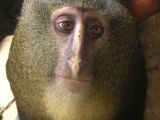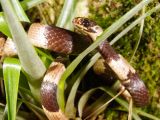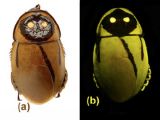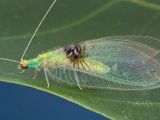This May 23, researchers at the International Institute for Species Exploration at Arizona State University decided to entertain the crowds by releasing 2013's top 10 new species list.
The species that made it on this list were all discovered in 2012, and there is little denying that they owe their popularity to their anatomical peculiarities and their quirks.
I can only assume that you're dying to learn what Mother Nature has been up to behind our backs all these years, so here's the list:
Lilliputian Violet
Those familiar with Jonathan Swift and his “Gulliver's Travels” might have already figured out that this plant is amongst the smallest in the world. Hence the decision to name it the Lilliputian violet (or Viola lilliputana, if you prefer).
Specialists say that, when fully grown, one such violet measures a mere one centimeter in height. Its natural habitat is the Intermontane Plateau of the high Andes of Peru.
Judging by its “impressive” size, it's a wonder that this plant was even discovered.
Lyre Sponge
The lyre sponge (Chondrocladia lyra) calls the northeast Pacific Ocean its home. However, those who wish to pay it a visit would do best to pack several oxygen tanks and ready themselves for a very long trip.
This is because the sponge was discovered at a depth of about 3,400 meters. The sponge is shaped like a harp, and researchers say that it is a carnivorous organism.
Read more about this weird sea dweller here.
Lesula Monkey
This animal allegedly looks fairly similar to a human, especially when one decides to pay particularly close attention to the shape of its eyes.
The lesula monkey currently lives in the Lomami Basin of the Democratic Republic of the Congo. Thanks to locals' hunting it down and eating it, the species is now listed as a vulnerable one.
No to the Mine! Snake
Rest assured, this reptile is not some aggressive greenhead ready and willing to set nuclear plants on fire just to prove a point.
Not to beat about the bush: scientists chose this name (i.e. the no to the mine! snake, a.k.a. Sibon noalamina) for it after learning that it only inhabits the Serranía de Tabasará mountain range in Panama, an area presently threatened by ore mining activities.
A Smudge on Paleolithic Art
This species is a type of black fungus. It was discovered on the walls of the Lascaux Cave in France, a site dating back to the Upper Paleolithic period.
Since Ochroconis anomala is a bit of a mouthful, scientists decided to refer to it as a smudge on Paleolithic art. Most inspired decision, I'd say.
World's Smallest Vertebrate
Just in case this question was keeping you up all night, here's the answer: the world's smallest vertebrate is a frog species measuring just 7.7 millimeters in length.
This species, named Paedophryne amanuensis, was found fairly close to Amau village in Papua, New Guinea.
Endangered Shrub
One other plant species turned out to be unique enough to make it on this list: the Eugenia petrikensis.
This plant is a shrub that can grow to be about 2 meters tall, and which sports clusters of small magenta flowers when in bloom.
The species was discovered in eastern Madagascar.
Glow-in-the-Dark Cockroach
As if roaches aren't already scary enough, there you have it: a roach that glows in the dark. Well, at least this will make it easier for people to see it and hit it when out cockroach hunting armed with nothing but a slipper.
The L. luckae is said to inhabit the areas surrounding the Tungurahua volcano in Ecuador, yet some fear that it has already gone extinct.
New Butterfly
This butterfly species was found near Kuala Lumpur, and not because somebody was actually out looking for it, but because some guy took a picture of it and posted it on Flickr.
An entomologist later saw the picture and confirmed that it was in fact a new species.
Hangingfly Dating Back to the Middle Jurassic
A new species of hangingfly dating back to the Middle Jurassic was found in China's Inner Mongolia.
These insects used to hide beneath foliage and simply wait for other insects to stumble their way so that they might kill them and feed on them.
Researchers say the Juracimbrophlebia ginkgofolia was rather skinny, had narrow wings and quite long legs. Apart from the wings part, this description sounds awfully similar to that of a supermodel.
Commenting on their decision to piece together this list and share it with the public, the researchers said that:
“Sustainable biodiversity means assuring the survival of as many and as diverse species as possible so that ecosystems are resilient to whatever stresses they face in the future.”
“No investment makes more sense than completing a simple inventory to the establish baseline data that tells us what kinds of plants and animals exist and where. Until we know what species already exist, it is folly to expect we will make the right decisions to assure the best possible outcome for the pending biodiversity crisis,” they added.

 14 DAY TRIAL //
14 DAY TRIAL // 
